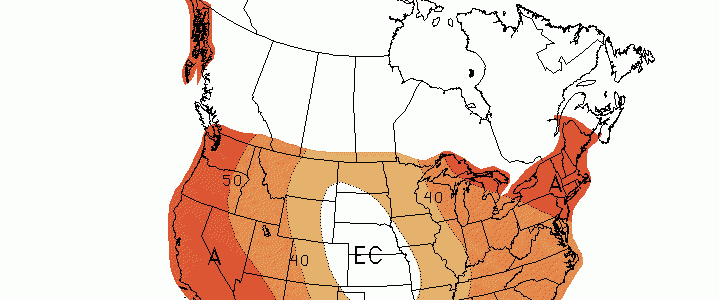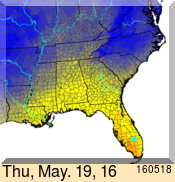-

The latest 3-month outlooks were released by the Climate Prediction Center today. They show that for the next four seasons, above normal temperatures are likely in each season for the Southeast. This is based both on long-term trends in temperature, which have been gradually rising, and the impacts of the La Niña which appears to…
Posted in: Climate outlooks -

NOAA released their monthly climate report for the globe for April 2016 today. You can read the summary at https://www.ncdc.noaa.gov/sotc/summary-info/global/201604 and follow their links to a full report. Many parts of the globe were at record-setting warm levels, although a few cold pools were still present, including east of Hudson Bay and near Iceland in the North…
-

Now that hot summer temperatures are coming on, you might need information about the likelihood of heat stress injury to your livestock. USDA has a set of forecast maps which show the likelihood of heat stress each day for the next week based on weather forecast models (the forecasts are produced as a partnership with the National Weather…
-

Because of the dry conditions in the Carolinas in April, forest fires caused a lot of problems. Here is a write-up of efforts by the North Carolina Forest Service and the State Climate Office of North Carolina to use past weather to help fight the fires this past month.
-

Dr. Marshall Shepherd of UGA posted a blog entry to Forbes.com this week describing the cost of weather-related disasters across the world. You can read it here. In it, he states that “From 1995 to 2015, weather-related disasters killed over 600,000 people (roughly 30,000 per year) and injured or adversely impacted 4.1 billion global citizens.”…
-

Business Insider posted a story this week describing the current drought in Ethiopia, which is one of the worst in the last fifty years. But unlike previous droughts, the worst impacts have been blunted by smarter methods of managing the land. The key to improvements: slowing down runoff so that it does not erode valuable…
-

As the wet season gets underway in Florida, Jeff Masters has a nice description of the wet and dry seasons in Florida in his Wunderblog post this week. We are seeing a pattern shift to more typical wet conditions in Florida and points north, which may help to reduce the moderate drought that has developed…